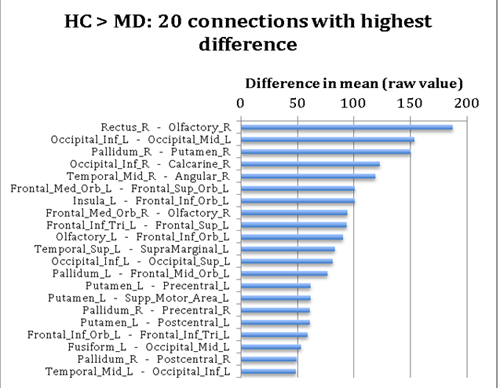Carsten Gleesborg, April 2016
Main Supervisor: Arne Møller, MD, Associate Professor
In recent years there has been focus on a link between olfaction and depression. During a depressive episode it has been shown that the sense of smell is reduced and that this is reversible with treatment. Loss of olfaction is detrimental to quality of life, particularly since taste is heavily influenced by olfaction. Indeed, a very common complaint among depressed patients is that their food tastes like cardboard.
While treatment for depression is estimated to have effect in 60-80% of cases, having had a depressive episode increases the risk for having another, and relapse is very common. Medical treatment may take as long as four weeks before taking effect and other common treatments are even slower. Thus, the search for a quick and efficient treatment form continues.
A potential candidate is waketherapy. Waketherapy was very popular in the 1980’s and consists of keeping the patients awake for prolonged periods of time. This has the added benefit of having little or no side-effect, compared to antidepressants or electroconvulsive therapy.
The drawback is that, like most treatments, it is not a “one-fits-all” intervention. About 60% of patients benefit from this therapy, and of these the majority relapse after one or two nights of sleep. Recently, waketherapy has been in focus again and efforts are made to try and prolong the effect of the therapy. This is being done by combining it with other therapies and treatments such as light therapy, which is very effective for seasonal affective disorder, commonly known as “winter depression.”
In this particular project we are going to recruit patients from an on-going waketherapy study at Aarhus University Hospital. In that study, patients are kept awake for 36 hours, three times, spread out over one week. Since prolonged wakefulness has been shown to cause decreased olfaction ability in healthy population we would like to examine the interaction between olfaction and depressive state in such a patient population before and after treatment.
We supplement this with different scanning methods to elucidate any changes in the brain as a result of treatment. Using a modern connectomic approach that has shown great promise in differentiating healthy from patient populations, we will examine the whole-brain networks of patients, controls, and healthy populations. We hope to be able to use this to classify who might benefit from waketherapy. This could potentially lead to improvements in individualised treatment.
A general assessment of olfaction ability will be done with SNOT-22, endoscopy and the Sniffin’ Sticks test. Additionally we will be doing MEG with an olfaction task using a purpose-built olfactometer to deliver bi-rhinal stimuli. Six odours classified into pleasant, unpleasant and food-related will be used. This olfaction paradigm will be repeated in the MR scanner for improved combination of the two methods. Furthermore rs-fMRI for functional connectivity and DTI for structural connectivity will be obtained.
Connectomic analyses we have done on DTI data from our Chinese collaborator show that 30 treatment naïve, first-time depressed patients when compared with 28 normal controls show reduced connections between olfactory cortex and other regions involved with the sense of smell. Further graph-theoretical analysis shows that the olfactory cortex loses status as part of the “binding club” in the patients, meaning that it is not part of the main information-integrating highway. Our results generally point to an overall loss of integration in the brain network of depressed patients.

Figure 1: Shown are the major changes in connectivity. Blue indicates a reduction for the patient group, and red indicates an increase for the patients. The thickness of the lines is relative to the change in connectivity, and the image has been thresheld to bring focus to the biggest changes.

Table 1: Listform of the connections significantly decreased in MD, ordered by highest mean difference. Only the top 20 shown out of 115 connections